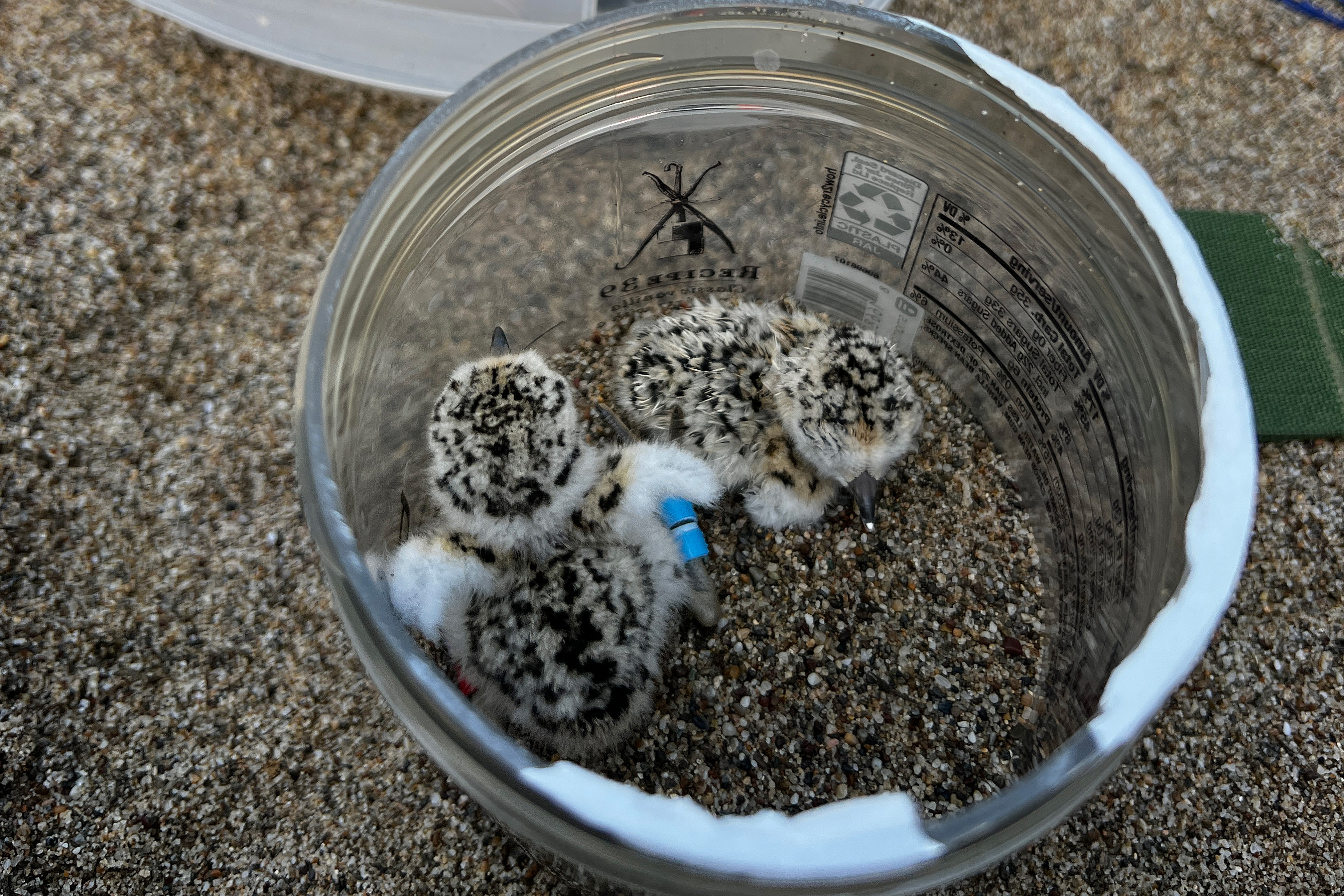Overview
Hello Ploverites!
We're coming up to peak nesting season—June and July tend to be when we see the highest number of active snowy plovers nests and broods simultaneously. Since our last update, biologists have found three new nests in the seashore: one south of North Beach parking lot, one just north of Abbotts Lagoon, and one in the Abbotts Lagoon restoration area. We're expecting a couple more to pop up on Limantour Beach and in the Lagoon restoration area in the next couple weeks. We also saw another nest hatch on North Beach just a couple days ago (see photo below).
Currently, we have two broods (five chicks) on Limantour Spit that are about two weeks old. There is one brood south of North Beach parking lot with two hatchlings, which is one of a few reasons why we implemented a no-dog zone on that stretch of beach. There are several broods at the north end of North Beach, closer to Abbotts Lagoon, consisting of seven to ten hatchlings there. Hatchlings are everywhere right now!
The rangewide Breeding Window Survey occurred in late May. This is a coast-wide effort where biologists and volunteers from across the coastline—from Washington to Baja California—count all of the snowy plovers observed to serve as an index for how large the listed breeding western snowy plover population is. For Point Reyes National Seashore, we observed 45 breeding individuals, which is up from our population estimate of 39 breeding individuals during the 2022 season.
If you have any questions, please feel free to contact Matt Lau via email.
CURRENT STATS:
- 27 total nests this season
- 10 active nest
- 11 hatched
- 6 failed nests
- 14–17 chicks on the beach
- 0 chicks confirmed fledged
 Newly hatched snowy plover chicks from North Beach. June 2023.
Newly hatched snowy plover chicks from North Beach. June 2023.
Photo credit: NPS/Matt Lau
 A new snowy plover nest in the Abbotts Lagoon restoration area. May 2023.
A new snowy plover nest in the Abbotts Lagoon restoration area. May 2023.
Photo credit: NPS/Matt Lau
 Trap camera photos monitoring a nest on North Beach caught two common ravens landing and inspecting an exclosed nest. The mini-exclosures protect the eggs from nest predators like common ravens. May 2023.
Trap camera photos monitoring a nest on North Beach caught two common ravens landing and inspecting an exclosed nest. The mini-exclosures protect the eggs from nest predators like common ravens. May 2023.
Photo credit: NPS/Matt Lau
The National Park Service shall not be held liable for improper or incorrect use of the data described and/or contained herein. These data and related graphics (if available) are not legal documents and are not intended to be used as such. The information contained in these data is dynamic and may change over time. The National Park Service gives no warranty, expressed or implied, as to the accuracy, reliability, or completeness of these data. For more information: https://www.nps.gov/disclaimer.htm
